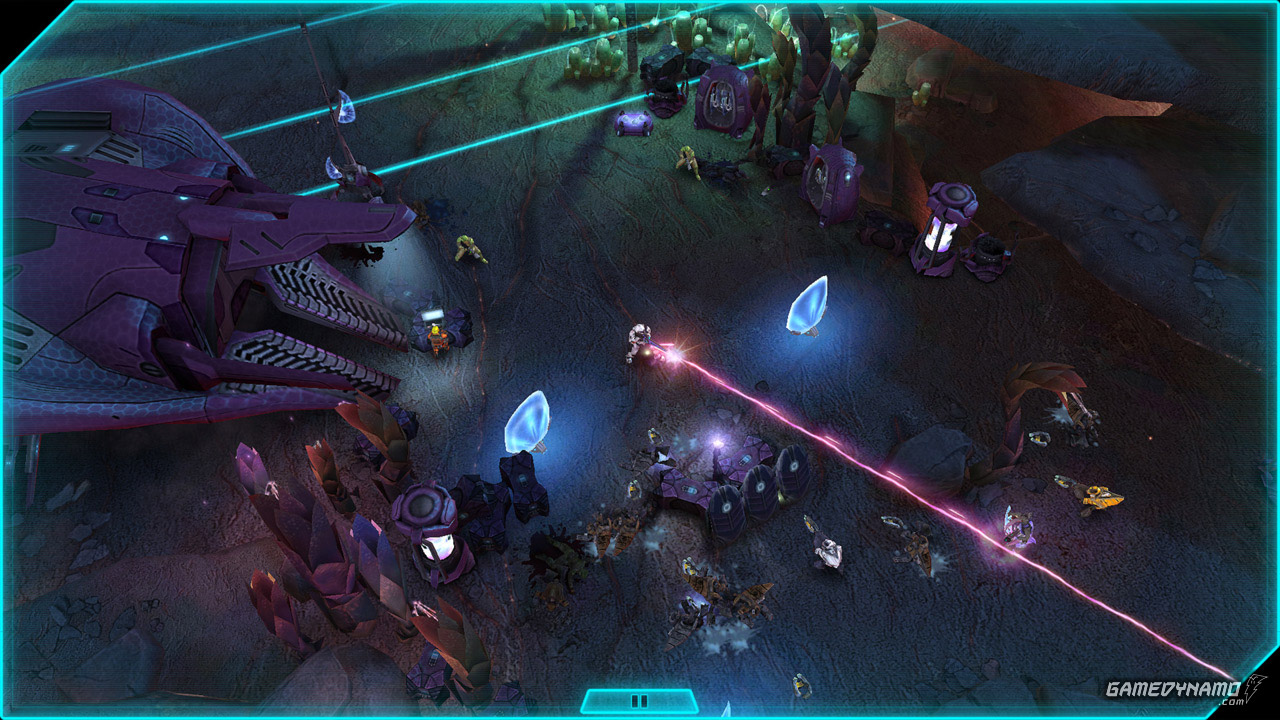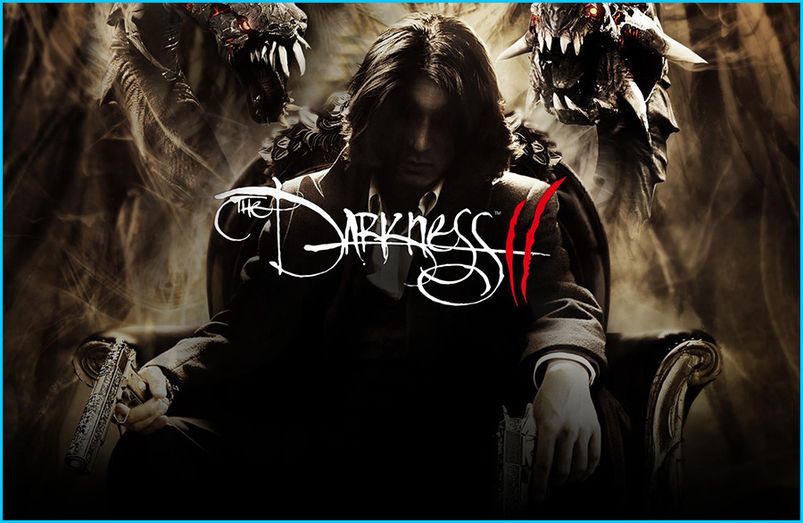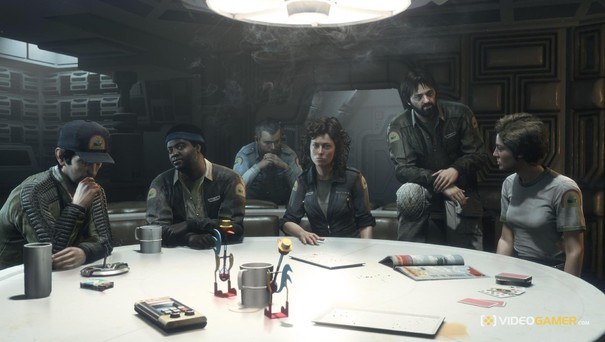

Unlike many other MMOs, though, Final Fantasy XIV is a little more flexible than others in that you're not locked in to the class you choose when you create your character -- once you hit level 10 in that starting class, you're then free to change to any of the others simply by swapping out the weapon you hold in your main hand. In this way, you can try out any of the classes the game has to offer before choosing which one you want to try and take to 50 first -- though note that any armor you're no longer eligible to wear will simply be unequipped when you change weapons, so be prepared for inadvertent nakedness, and make use of the Gear Sets option to save your equipment combinations and save embarrassment.
Every 5 levels, a class will offer you a quest that is part of an ongoing storyline. Each class has its own unique storyline to follow, and they all wrap up at level 30. After that, you'll start a new questline. First you'll need to upgrade your class into its more powerful Job counterpart by levelling a secondary class to 15 and completing a special quest, and after that you'll be able to follow the Job's narrative all the way to 50. At level 45, you'll get the first pieces of your Job's "artifact" (or "AF") armour, and you'll receive the last piece at level 50, which will complete your distinctive "look" and make your character immediately identifiable as one of the available Jobs in the game.
But we're getting ahead of ourselves. Which class should you choose first, and what are their roles in a party?
Classes in Final Fantasy XIV are currently split into three main types: Tank, Healer and DPS (Damage Per Second, also known simply as damage dealers). Each has their own distinctive and important role to play in a party situation.
Tanks are the front line of the party. In a four-player Light Party, which is the setup for most of the dungeons in the game, there's a single Tank who tends to become the de facto leader of the party, while in eight-player Full Parties, there are two Tanks, one of whom becomes the Main Tank (or MT) and the other of whom becomes the Off-Tank (or OT). Tanks (or MTs in Full Parties) tend to lead the charge through dungeons, mark targets and begin combat encounters. The Tank's most important job is to try and hold aggro -- maintain the attention of the monsters the party is fighting -- and ensure that they are the one taking the majority of the damage rather than more "squishy" party members such as mages.
Healers are self-explanatory -- they ensure that the party is topped up on HP, and remove status effects when they are inflicted. For the majority of the time, the healer will be targeting the Tank or Main Tank, since they will be the one taking the majority of the damage. Healers will need to keep an eye on the other party members' HP, though, since some damage -- particularly from bosses -- is unavoidable, even if the tank still has aggro.
DPS classes, meanwhile, are responsible for inflicting as much damage as possible as quickly as possible. They can be further subdivided into two types: melee DPS, who need to get up close to enemies to damage them, and ranged DPS, who can fling death and destruction from a distance. Both types are important, particularly in later dungeons.
Regardless of which class you are, you have some responsibilities when you're playing as part of a party: know your role, and try not to get killed. The former we'll cover in detail in a moment; the latter is a case of coming to recognize the various enemies' attacks and, most importantly, ensuring that you don't stand in anything that appears on the floor. If a red circle or arc appears, move. If something weird appears that you don't recognize, move. If the big sweaty giant in front of you looks like he's about to smash you with his hammer; move! The game will normally give you plenty of visual feedback on when a nasty attack is coming, so be sure to know when to get out of the way!
Let's take a detailed look at the specific classes, then, and how to get the best out of them.
Type: Tank
Weapon: Sword and shield
Primary Stat: Vitality
Upgrades to: Paladin
Secondary class: Conjurer
Starts in: Ul'Dah
Gladiator, which becomes Paladin at level 30, is one of the two tanking classes in Final Fantasy XIV, and it's the one to choose if you like wielding a sword and shield while clad in heavy armor.
When playing solo as a Gladiator, you'll want to make use of your most damaging skills to take down enemies as quickly as possible, and perhaps make use of gear that emphasizes Strength rather than Vitality. Gladiators don't hit as hard as dedicated damage-dealer classes, but it's possible to hold your own when you're by yourself, particularly with the tank classes' increased survivability over more squishy Jobs.
When playing in a party, you'll need to behave a little differently. Most groups look to the tank to lead the group, so be prepared to mark targets (at the very least, a "1" over the target you're attacking first helps everyone focus their fire in one place), lead the way through dungeons and initiate battles. If you're new to a dungeon or not sure what to do, be sure to speak up; better more experienced party members know that you need some support than you try and soldier on without really knowing what's happening.
When battling groups of enemies, begin the fight by hitting the first target with a Shield Toss. Then position yourself so the enemies are facing away from the rest of the party -- to help minimize them getting hit by area-of-effect attacks -- and fire off a couple of Flashes to get some solid aggro on you. Then begin using your combo abilities -- Fast Blade followed by Savage Blade (followed by Rage of Halone at higher levels) in most situations -- to maintain aggro. Switch targets every few combos to get a few hits on the other targets before the rest of the party start dealing damage in earnest, and if you do lose the attention of an enemy, make use of Shield Toss, Flash and Provoke to get it back as quickly as possible. Also note that a lot of abilities can be interrupted by using Shield Bash while they are charging -- but you have to be quick in order to pull this off successfully, and many bosses are immune to this effect.
Gear is very important as a Gladiator. While you'll be monopolizing the attention of the healer for much of the time, it pays to have as much survivability as possible. Pick gear that gives you strong boosts to Vitality and your defense statistics, and be sure to pump all your bonus stat points into Vitality when you level up. Don't skimp on your weaponry, though; building aggro is partly determined by how much damage you're dealing, so if you're constantly losing aggro to the damage dealers or healers of the party, consider upgrading your weapon as soon as possible.
You might find it difficult to hold aggro early in the game; hang in there and keep going, as many of the abilities you pick up later make it significantly easier to keep the attention of enemies, particularly once you become a Paladin at level 30. Don't neglect your gear, and for heaven's sake, step out of red things when they appear. Your healer will thank you.
Type: Tank
Weapon: Axe
Primary Stat: Vitality
Upgrades to: Warrior
Secondary class: Gladiator
Starts in: Limsa Lominsa
Marauder, which becomes Warrior at level 30, is another Tank class, and like Gladiator/Paladin, is able to equip heavy armor. Unlike their Gladiator counterparts, however, Marauders make use of heavy two-handed weapons rather than the more nimble sword and shield combo. They also have a higher HP pool and a better damage-per-second rate than Gladiators.
One of Marauder's biggest distinctions from Gladiators comes when they earn the Overpower ability at level 12. This is a "cleave" attack that hits targets in an arc in front of you rather than a single-target attack, and increases enmity in all of those targets. This makes it a good choice at the beginning of a fight with multiple opponents, when enemies tend to be clustered together. If you've also levelled Gladiator to pick up the Flash and Provoke abilities, you can also use these as a Marauder, which helps enormously, particularly in the early game.
As with Gladiator, be sure not to neglect your gear as a Marauder, particularly if you're struggling to maintain aggro, and make full use of all the abilities you earn as you level up to become the best tank you can be. Otherwise, many of the tips mentioned under Gladiator also apply when playing as a Marauder.
Type: Healer
Weapon: Staff
Primary Stat: Mind
Upgrades to: White Mage
Secondary class: Arcanist
Starts in: Gridania
Conjurer is the only dedicated Healer class you can pick at the outset of the game; though Arcanists have some healing spells in their arsenal, they're considered to be DPS classes until you earn their Scholar advanced Job -- but more on that later.
As a Conjurer, you'll have access to elemental magic such as the direct-damage Stone and Stone II, the damage-over-time Aero and Aero II, and, eventually, the spectacular Holy. Early in your career, you'll pick up the ability Cleric Stance which, when active, swaps your Intelligence and Mind statistics. Intelligence determines the power of attack spells, while Mind determines the power of healing spells, so pump all your bonus points into Mind -- and wear gear that boosts Mind -- and you'll be able to switch between offensive and defensive modes as you see fit.
When soloing, you'll probably want to spend a fair amount of time in Cleric Stance to take down enemies quickly. When in a party, however, your priority should be healing the other party members, so swallow that pride, turn off Cleric Stance and concentrate on those Cure spells.
Early in the game, you'll be doing little more than casting Cure on the tank over and over again. Later, you'll pick up two stronger versions of Cure, but you'll probably still want to stick with Cure for the most part. The Freecure ability occasionally triggers when you cast Cure, allowing you to cast Cure II for free; casting Cure II occasionally triggers Overcure, which halves the cost of Cure III.
Keep an eye on the party list, particularly for debuffs, which appear as downward-pointing arrows with a red backdrop. Remove these as soon as possible with a swift cast of Esuna, but not at the expense of casting Cure on someone who is very low on HP. If three or four party members have all taken damage, consider casting Medica instead, which is an area effect restoration spell with slightly lower potency than Cure.
Conjurers need to be as mindful as tanks about aggro. Don't cast Cure unless you need to; get a feel for how many HP are restored with a single cast of the spell, and only cast it when your target has taken that much damage or more. Casting Cure spells on targets that are already on full HP is an aggro magnet, as is casting something like Regen on a target that doesn't need it. This can occasionally be used to your advantage, but for the most part try and blend into the background as much as possible when playing in a party -- and watch your MP, since Conjurers can't restore their MP easily in battle.
Type: DPS
Weapon: Tome
Primary Stat: Intelligence or Mind
Upgrades to: Summoner or Scholar
Secondary class: Thaumaturgist or Conjurer
Starts in: Limsa Lominsa
Arcanists are a peculiar class in more ways than one. Although defined as a damage-dealer class when using Duty Finder, their various pets and abilities allow them to act as tanks, damage-dealers or healers as the situation demands. Emerald Carbuncle, which you'll earn at level 4, specializes in wind-aspected attacks, while Topaz Carbuncle, which you'll earn at level 15, is more of a tank.
Arcanists don't have that many direct damage spells of their own. Instead, many of their effects inflict status effects or damage-over-time (DoT) conditions that can weaken and debilitate an enemy, making it easier to kill. The bulk of your work will probably be done by your pet, though, so keep an eye on what they're up to and make sure you're familiar with how to order them around -- particularly in a dungeon. A misbehaving pet can cause big problems in a challenging dungeon, so be sure to keep them close and don't let them charge off to find their own targets!
Arcanist's main peculiarity, though, is the fact it can lead into two different Jobs at level 30. Summoners are damage-dealers who earn the right to summon teeny-tiny "Egi" versions of the Primals of Eorzea, while Scholars are healers with fairy companions who help them take care of the party. Whichever one you pick is up to you, but bear in mind the two Jobs have very different primary stat requirements -- if you're taking aim at Scholar, then you'll want to pump as much as you can into Mind, while if you want to be a Summoner, you'll need to buff your Intelligence as much as you can. Remember than if you mess up your stat point assignments, your Grand Company will allow you to reassign them for 10,000 Company Seals. Alternatively, level Conjurer enough to get Cleric Stance, then use it as one of your Cross-Class skills to switch between having a strong Intelligence or Mind stat -- and consequently the ability to switch between Summoner and Scholar -- at will.
Type: DPS
Weapon: Staff or Rod and Shield
Primary Stat: Intelligence
Upgrades to: Black Mage
Secondary class: Archer
Starts in: Ul'Dah
Thaumaturgists are your standard heavy-damage mage-type class with a twist: they have an essentially bottomless pool of MP.
Key to mastering Thaumaturgist is getting your head around the Astral Fire/Umbral Ice mechanic, which can initially seem a little confusing. Here's how it works: cast ice-aspected spells and you'll build up stacks of Umbral Ice, which does several things: it makes ice spells cost more MP to cast and fire spells less; it decreases the amount of damage your fire spells do; and it causes your MP regeneration to skyrocket. Conversely, cast fire-aspected spells and you'll build up stacks of Astral Fire, which likewise does several things: it makes fire spells cost more MP to cast and ice spells less; it increases the amount of damage your fire spells do; and it causes your MP regeneration to stop dead.
Initially, you'll only be able to earn one stack of Astral Fire or Umbral Ice, but by the time you reach level 50, you'll be able to get up to three stacks, and swap immediately between them using Fire III or Blizzard III. Until then, you'll need to make use of other abilities to quickly switch -- most notably Transpose, which swaps you from Astral Fire to Umbral Ice and vice-versa.
Eventually you'll fall into a rhythm, though this will vary somewhat according to exactly how many MP you have and what spells you have available. Essentially you want to minimize the amount of time you spend not casting, so don't run your MP reserves dry with Fire spells; switch to Umbral Ice to recharge before that happens, and fling off a Thunder spell (which inflicts damage over time) while your MP is regenerating.
Perhaps the most important ability you'll learn in this class is level 26's Swiftcast, which causes the next spell you cast to have no cast time. This is moderately useful for Thaumaturgists and Black Mages, but it really comes into its own as a cross-class skill for White Mage, when it can be used to instantly resurrect KO'd party members without the normal lengthy cast time for Raise. If you're planning on primarily playing as a healer, consider spending some time as a Thaumaturgist to at least earn Swiftcast.
Type: DPS
Weapon: Bow
Primary Stat: Dexterity
Upgrades to: Bard
Secondary class: Pugilist
Starts in: Gridania
Archer is another ranged damage dealer, but unlike its magical counterparts, it's able to move while using skills. This makes it ideal for "kiting," where you continually keep on the move to avoid taking damage from enemies or to help move them into a more tactically advantageous position.
Archer has an array of very useful skills, ranging from self-buffs to area of effect attacks and powerful damage abilities. When upgraded to Bard at level 30, they gain the ability to use a number of different Songs that gradually drain the Bard's MP while conferring other benefits to the party. Of particular note is Mage's Ballad, which continually restores MP to nearby allies, making Bards the best friend of White Mages in particular all across Eorzea.
When playing solo as an Archer, you'll want to keep on the move so you can pelt enemies while minimizing the amount of damage you take. When playing as part of a party, you'll want to keep well back from the front lines and use your skills from afar. Should you inadvertently draw the attention of a monster, you can use your skills to keep doing damage while you run away, unlike many of the other classes. When you become a Bard, pay close attention to how the battle is going when deciding whether or not to use one of your Songs; a healer struggling to stay on top of incoming damage will certainly appreciate a Mage's Ballad, but bear in mind you'll lose some of your own damage output while it's active.
Type: DPS
Weapon: Knuckles
Primary Stat: Strength
Upgrades to: Monk
Secondary class: Lancer
Starts in: Ul'Dah
Pugilists are a pure melee damage dealer class, and a lot of fun to play. If you ever played Xenoblade Chronicles on Wii, their closest parallel would be the way Shulk behaved in that their various skills are a lot more dependent on positioning than other classes -- certain attacks will deal more damage or have additional effects when unleashed from the side or the back of an opponent. If you're having trouble determining which way a foe is facing, use its target marker on the floor -- it has an arrow pointing the direction the monster is facing, and the area considered "behind" them has a thinner section of circle.
Pugilists have a combo system, though it's not quite the same as for Gladiators and Marauders, where one skill naturally leads into another. Instead, the skills you can do are determined by which of the three "forms" you're currently using -- Raptor, Coeurl or Opo-Opo form. Some skills may only be used when you're in a certain form; others provide bonuses if you use them when you're in a particular form. Be sure to read the skill descriptions carefully in your Actions & Traits menu to familiarize yourself with how they all work.
Upgrading to Monk at level 30 will eventually equip you with even more means of dealing death and destruction from your ever-pummelling fists, and with the Job's high survivability, they're a popular choice for both solo and party-based adventuring.
Type: DPS
Weapon: Spear
Primary Stat: Strength
Upgrades to: Dragoon
Secondary class: Marauder
Starts in: Gridania
Lancers are spear-wielding DPS characters who have a long reach plus a number of powerful abilities, some of which can hit multiple enemies at once. Much like Pugilists, Lancers do their best work when positioned to the side or behind other enemies, so be sure to move yourself into position once a fight is underway.
Lancers are also a lot more self-sufficient than some other classes -- their Life Surge ability at level 18 allows them to restore up to 10% of their own HP while inflicting damage, for example, while level 22's Invigorate allows you to restore TP and keep your combos going longer.
Like other Disciple of War classes, Lancers have a number of combo abilities that work best when performed in sequence. If you're playing with a controller, set these to face buttons so you can unleash them quickly and easily in rapid succession.
At level 30, you'll become a Dragoon, and in true Final Fantasy tradition this means lots of jumping around. Jump attacks tend to be quite strong but have a bit of a recast time on them; Elusive Jump is also a good means of quickly escaping danger by leaping backwards -- conveniently, this also reduces the aggro on you in the process, as well as removing Heavy or Bind effects you might be afflicted with.




 . Plays September 30
. Plays September 30 Destiny: how to beat the Elder Cipher Exotic Weapon Bounty
Destiny: how to beat the Elder Cipher Exotic Weapon Bounty Hammerfight - Chapter 1 The Gaiars Solo Mode Walkthrough
Hammerfight - Chapter 1 The Gaiars Solo Mode Walkthrough Resident Evil 6 Guide: Chris Chapter 2 Guide - GamersHeroes
Resident Evil 6 Guide: Chris Chapter 2 Guide - GamersHeroes Once The Rockets Are Up, Who Cares Where They Come Down? - A Kerbal Space Program Review
Once The Rockets Are Up, Who Cares Where They Come Down? - A Kerbal Space Program Review